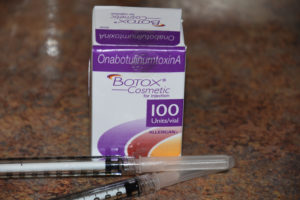At this point in time, almost everyone has heard of Botox and know it as a changer of facial expression. To those people who receive these neuormuscular injections, they are aware that to receive it is given in dosages known as units. They often are aware of the exact units that they have received because the cost of their treatment is priced per unit in many practices.

In the recent February 2013 online edition of the JAMA Archives of Facial Plastic Surgery, a paper was published entitled ‘Electromyographic Differences Between Normal Upper and Lower Facial Muscles and the Influence of Onabotulinum Toxin A’. An electromyographic (EMG) study was done to investigate why upper facial muscles require substantially greater paralysis than lower facial muscles to get a visible aesthetic wrinkle reduction effect. In 26 adults the dose response to Botox injections of the corrugator muscles in the forehead (20 units) and the depressor anguli oris (DAO) muscles of the chin. (4 units) were given. Muscle activity was tested both before and after the injections. While the activity was similar in the upper and lower facial muscle prior to the injections, the upper facial muscles had a significantly greater response to a much higher dose of Botox. This suggests that there is a need for near-total paralysis of the forehead muscles to get a good result. The lower facial muscles are much more sensitive to Botox and are effected by a much lower dose.
Why do the upper and lower facial muscles differ in their response to Botox? There may be some inherent susceptibility differences in the motor endplates between the muscle groups to the effects of Botox. It may be equally possible that, despite being dose-dependent, that it merely requires less muscle weakening in the lower face to create the desired aesthetic result. Two units to the DAO muscle (to create a mouth corner upturn), two units to the paranasal muscles (to improve a gummy smile) or 6 to 8 units for upper lip wrinkles can create good results. Conversely, a few more units can create aesthetic problems such as smile and lip animation disruptions. Thus the mouth area has a much more narrow therapeutic window than the forehead muscles.
Botox is effective in both the upper and lower face for expression control and wrinkle reduction. But the lower doses needed in the lips and chin means their treatments are very economical but must be precisely placed to avoid aestheti lip and mouth problems.
Dr. Barry Eppley
Indianapolis, Indiana


